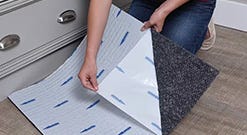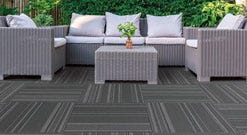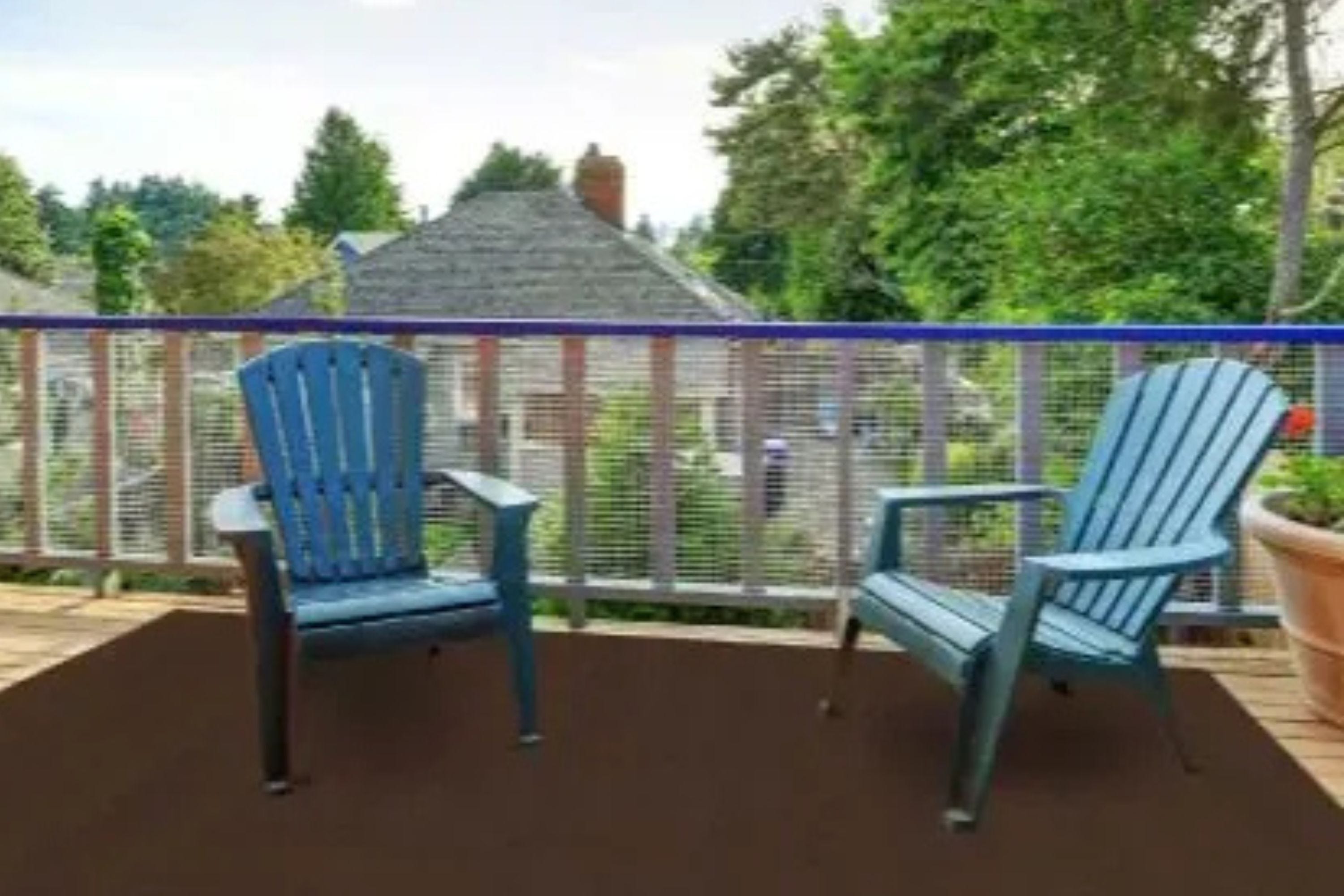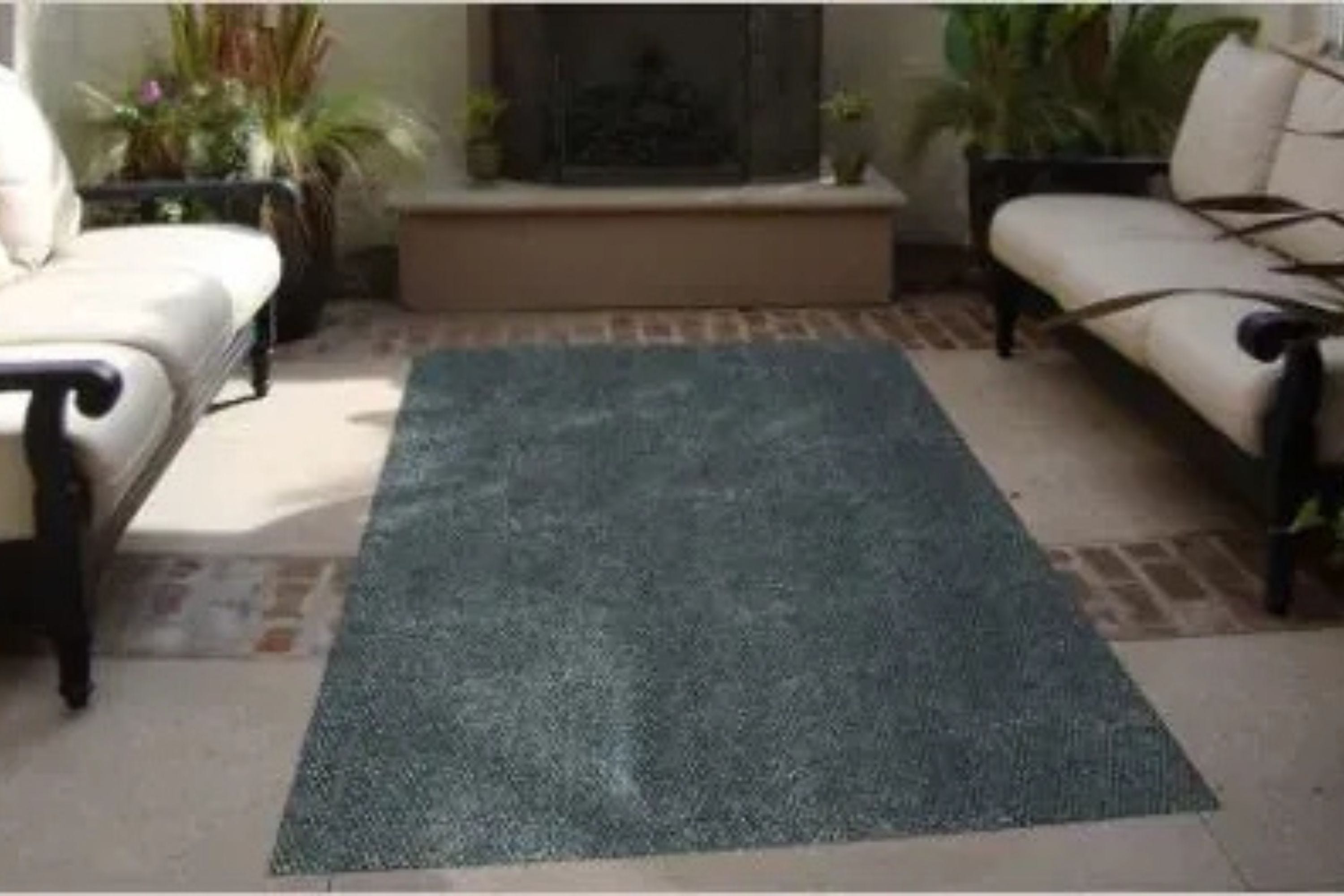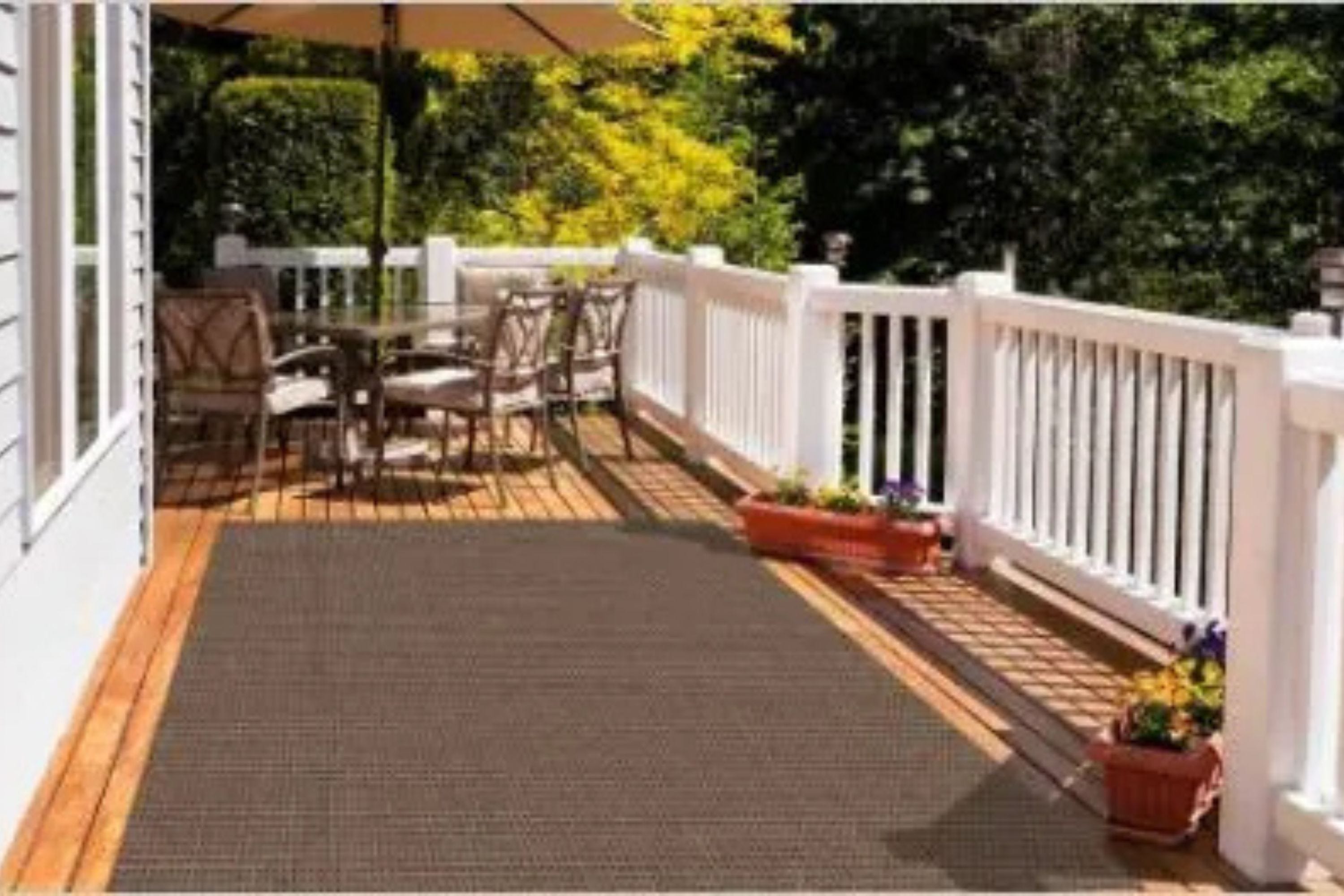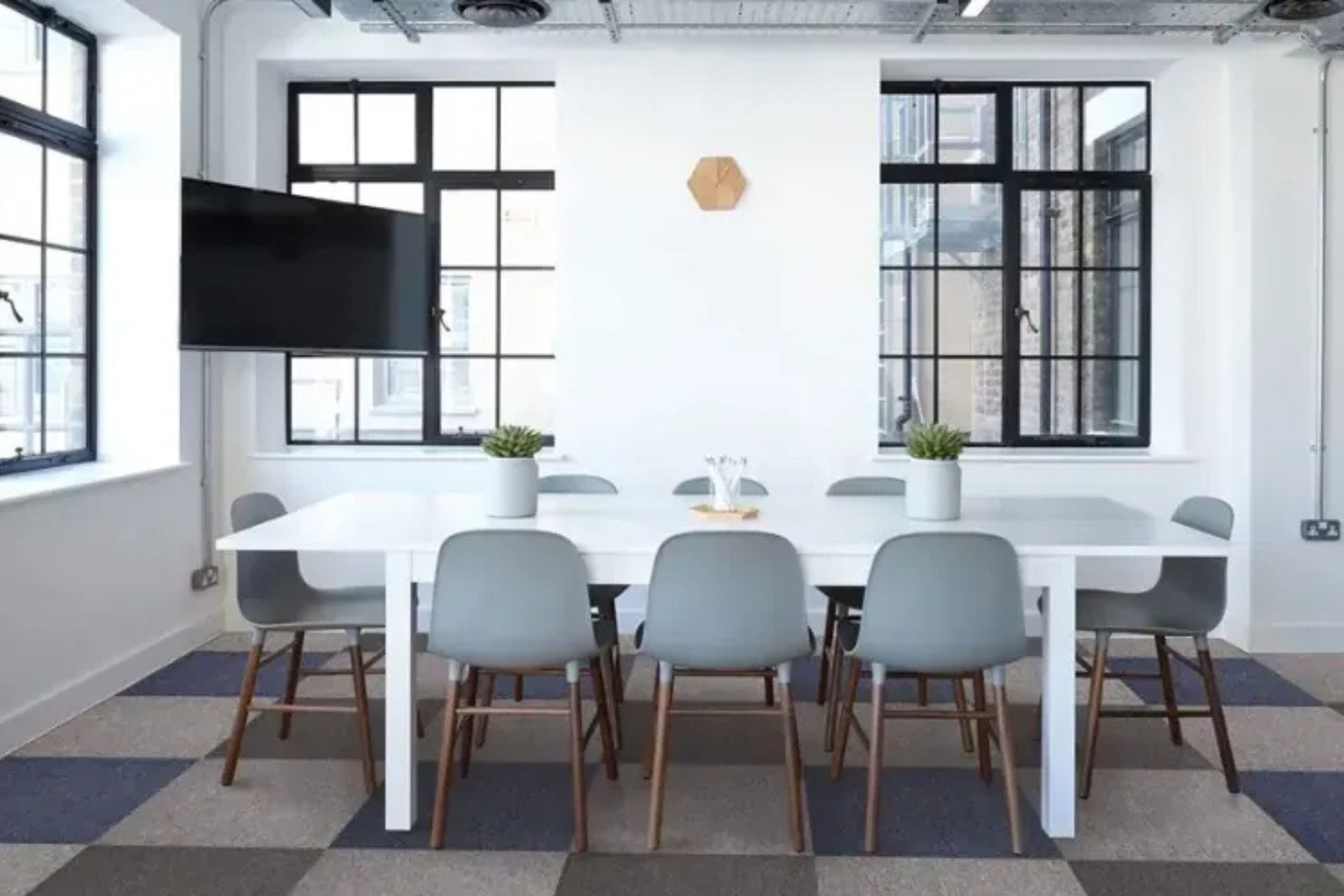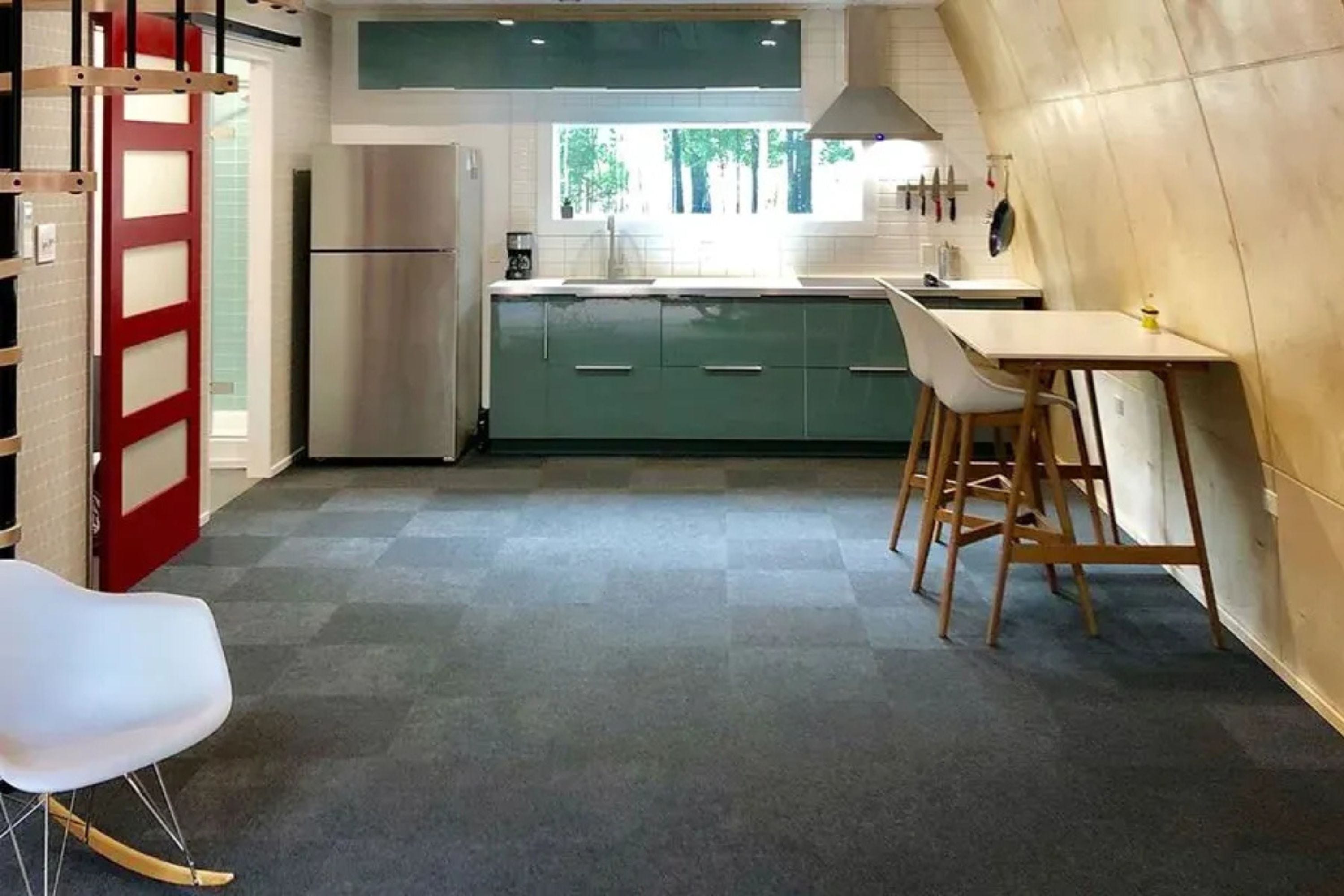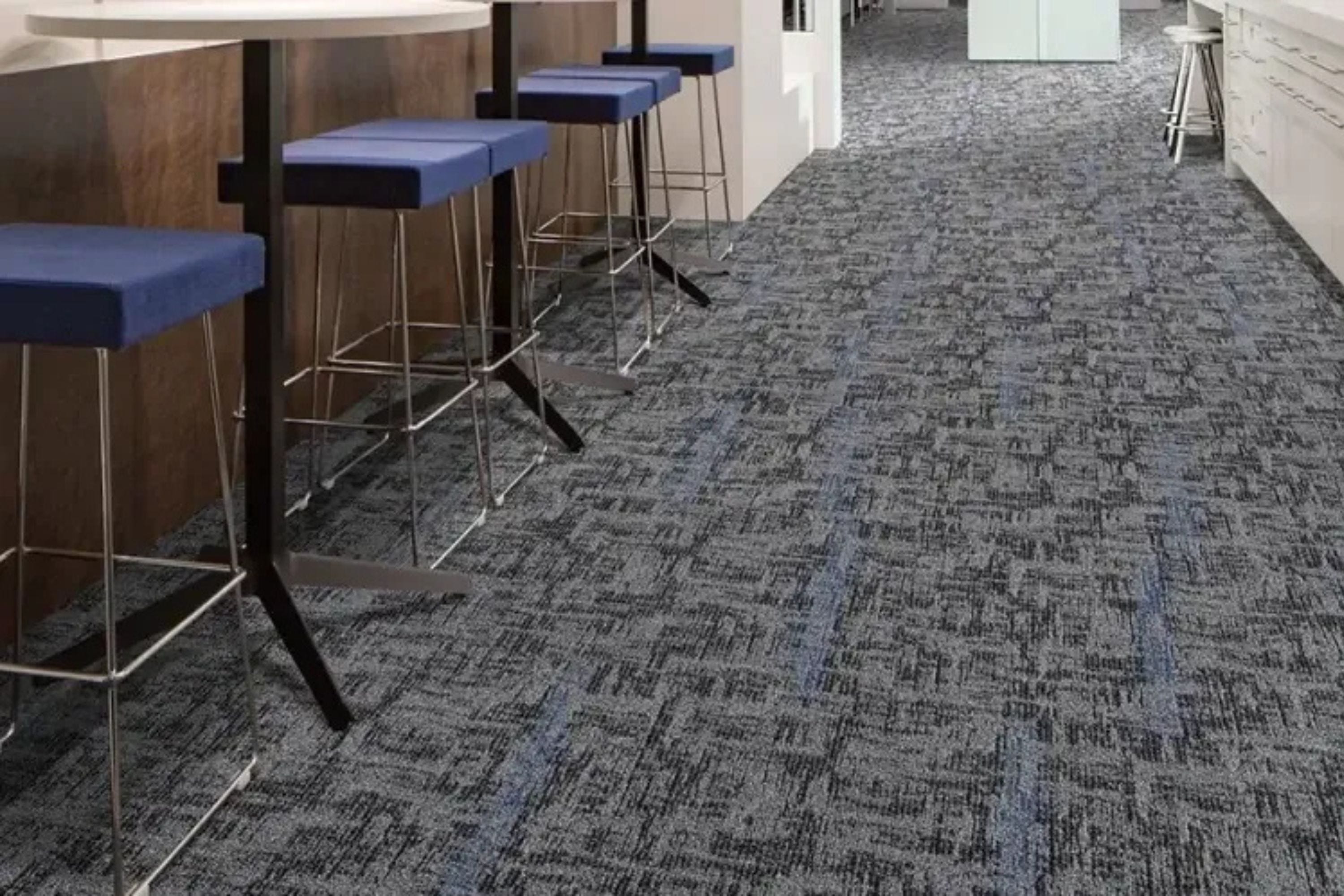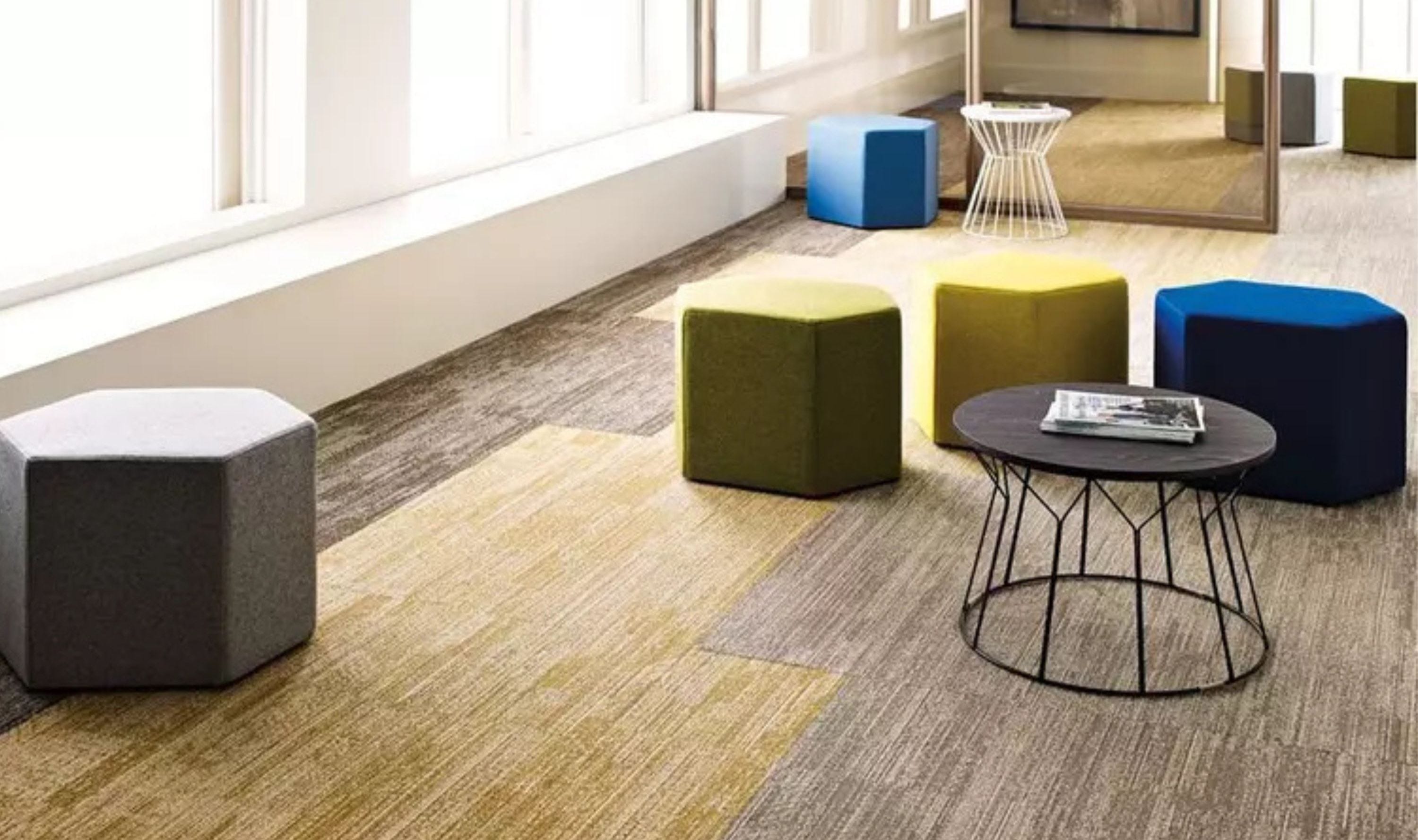
Customer Favorite Carpet Tiles
How to Buy Carpet Tiles
Offering DIY-friendly installation, painless maintenance, a multitude of customization options, and that unmistakable softness underfoot, carpet tiles have become a leading choice in flooring for both homeowners and businesses.
Carpet tiles make it easy to create custom area rugs for your space or have wall-to-wall carpet without any waste. Plus, you can easily replace a damaged tile with a brand new tile. You can enjoy the ease of completely tiling a room with a luxurious carpet in only a few hours with carpet tiles.
We know it sounds great, but to make sure you have all the facts, let’s go over more about what makes carpet tiles one of the most popular flooring options.
Types of Carpet Tiles
While you might think that every carpet tile is the same, there’s actually a variety of carpet squares for sale. From application to shape, we have you covered.
- Indoor/Outdoor: To have the coziness of carpet on your deck, balcony, or sunroom, consider indoor/outdoor carpet squares. An Indoor/ outdoor carpet is built to last the outdoor elements.
- Tiles: Carpet tiles are as easy as they sound. You can mix and match them to create a custom carpet or area rug that also has a DIY-friendly installation process.
- Planks: For a more unique and modern carpet, you can use carpet planks, which are just as DIY-friendly and convenient as carpet tiles.
Carpet Square Application
The flooring in your house or business needs to do more than just look pretty. That’s why you need a carpet that can handle the appropriate level of foot traffic.
Here are the suggested traffic applications to consider.
- Low traffic: Suitable for spaces that will see light use by small groups of people. This carpet should be used only for residential applications.
- Medium traffic: Suitable for spaces that will see moderate to heavy use by medium size groups of people. This carpet is ideal for the home, and can also be used in light commercial settings.
- High traffic: Suitable for spaces that will see heavy use by large groups of people, such as large offices, retail stores, gyms, and restaurants.
- Extra-heavy traffic: Suitable for spaces that will see the most extreme use by large groups of people, such as public areas, hospitals, and entrances to commercial spaces.
Carpet Tile Features
Looking for carpet squares that are loaded with extra features that take your flooring from great to amazing? We got your carpet tiles, here! Check out these life-ready features.
CRI Green Label Plus
If you’re concerned about air quality, chemicals, and odors, we have tiles that are CRI Green Label certified. This is a certification from the Carpet and Rug Institute to improve the health and safety of indoor spaces and make sure the air quality is top-notch.
Class 1 Fire Rating
Fire damage is a real concern for any home or business owner. That’s why it’s important to choose the flooring that has a Class 1 fire rating. This rating means that the carpet tile is highly resistant to fire and does not spread flames quickly.
Made in the USA
Many of our top products were made right here in the USA, so you can feel good about your purchase. Someone is out there manufacturing your beautiful flooring, they may even be in your community! That’s a feeling you can’t beat. USA-made flooring also follows sustainability practices.
Attached Pad
Avoid the extra cost of buying carpet padding for your tiles, because some have it already attached. No more stress about picking the right padding for your carpet. Simply buy your carpet, and start installing. Then you will have a beautiful, comfortable carpet in no time at all.
Carpet Tile Material
The material of your carpet tile will dictate where you install it and how durable your flooring will be. Our selection of carpet squares and planks have several durable materials to choose from.
- Nylon: One of the more popular carpet materials, nylon is very soft, durable, and resistant to stains and abrasion.
- Polyester: Polyester is a synthetic resin that repels water. This fiber is durable and provides high color retention.
- Polyethylene: This material contains recycled plastics, making it more stain-resistant and less prone to mold and mildew.
- Polypropylene: This is a polymer created from monomer propylene. This kind of fiber is resistant to stains, soil, wear, and mold.
- Olefin: A synthetic fiber made from a polyolefin, olefin creates a sturdy outdoor carpet fiber that hangs tough against all weather conditions.
Carpet Tile Backing
Carpet tiles feature a multitude of backings. While all of these backings provide stability to the carpet tile and structure to the pile, there are also a few differences. Here are the backings we offer.
- PVC: A durable, dimensionally stable carpet backing that is flexible and keeps pile secure and in place.
- Plastic: A strong carpet backing that does not affect indoor air quality.
- Polyurethane Cushion: This backing helps improve the carpet’s lifespan, appearance, and sound insulation.
- Bitumen: Bitumen is the carpet backing that started it all and is reinforced with fiberglass and polypropylene, making it extra stable and durable.
- Rubber: It’s great when used under interlocking carpet tiles, and is primarily used in gyms.
- Foam: Foam typically backs interlocking carpet tiles installed as trade show flooring or gym flooring. They are anti-fatigue and to cushion most foot traffic.
- Polypropylene: This is one of the more durable backing options as it is strong and stable.
Carpet Tile Thickness
To find the perfect carpet tiles for your space, you also need to consider the carpet pile height and the size of the tile. The thickness and size of your carpet tile can dictate where you install it.
For instance, carpet tiles that have a tall pile height can be easily crushed under heavy objects or high foot traffic. That’s why it’s recommended to put thinner, denser carpet in commercial or busy areas, so your carpet will look great longer. If you are installing carpet tiles in a low-traffic area, the thicker carpet will work perfectly.
Carpet Tile Patterns
For some added style, carpet squares have it covered with patterns to complete every room. From geometric to glow in the dark patterns, you can create a unique, fun carpet with carpet tiles. Whether you want a solid color or something a little more exciting, we have multiple options to choose from.
✅ Geometric print: For a fun, unique carpet, a geometric print will give you an eye-catching statement piece in your space.
✅ Linear: For subtle, beautiful carpet visuals, get linear patterned carpet tiles. They’re unique, classic, and perfect for that extra pop of pattern.
✅ Stripe: Classic and dynamic, striped patterns give you a creative carpet without being too much. Get striped patterned carpet with carpet tiles and planks.
✅ Berber: For sturdy, classic carpet, consider Berber textured carpet tiles. The short pile height ensures that you can have a beautiful, durable carpet or rug.
✅ Solid: To pull the entire room together, you can add solid color carpet tiles. For a bit more excitement, you can always mix and match different colors.
✅ Glow in the dark: Looking for a fun home theater carpet? How about glow in the dark carpet tiles? With creative, abstract designs, your flooring will be the second most eye-catching thing in your theater.
Carpet Tile Installation
Carpet squares and planks are easy to install in one of three ways: interlocking, peel and stick, or glue-free.
Interlocking
Interlocking carpet tiles look one of two ways: like a giant puzzle piece, or with plastic attachments on the sides to click into one another.
Tiles that interlock using puzzle-like edges are carefully laid out and joined together with ease. You can cut these tiles to have a finished edge, or they sometimes come with a finished edge.
If the tile has a plastic backing, just click them together using the locking mechanisms on the side.
Peel and Stick Carpet Tiles
If you want easy, peel and stick carpet tiles are the easiest to install. The adhesive is already applied to each tile and all you have to do is pull back the plastic sheet to expose it. Simply place the peel and stick carpet tile on the floor, and press down to adhere it.
Glue-Free Carpet Tiles
There are many glue-free carpet tile options. To install, simply use double-sided carpet tape to secure the edges of the tiles. If you secure tiles using the tape method, you can finish a room in record time. This option also gives you flexibility, so instead of installing wall-to-wall carpet, you can choose to make a custom-made area rug, a hallway runner, or any design you like.
Please note: For a room with high traffic, you’ll need a pressure-sensitive adhesive (carpet tile glue), to keep the tiles in place with a more permanent hold.
Carpet Tile Reviews
“I wanted to put something down in my apartment kitchen that would help with sound and comfort. The tiles ended up working perfectly. They were easy to cut. I used the floating tab installation and I put a small amount of tape between the perimeter and the existing floor.
I've noticed I walk kind of hard and being on the second floor of my apartment building, I was concerned with noise for the person below me. With the tiles down, I immediately noticed a noise difference. I'm considering doing this in a few other spots too since it worked out well.”
- Bre from Vegas
“Used as temporary flooring in an apartment bedroom. The floors were really loud with each step so I decided to put down something to absorb so I'm not going nuts. I like that I will be able to move these when I move.”
- Thomas from Buena Park
“Used as temporary flooring in an apartment bedroom. The floors were really loud with each step so I decided to put down something to absorb so I'm not going nuts. I like that I will be able to move these when I move.”
- Thomas from Buena Park
Other Helpful Carpet Tile Content
Carpet tiles are a durable, easy to install alternative to carpet roll flooring. The possibilities are practically endless!
They're perfect if you have kids and/or pets, and the installation is a breeze. Best of all? You can save yourself a fortune on an installer by following this easy step-by-step guide and installing them yourself.
When you want the comfort of carpet, but not the hassle or price tag of wall-to-wall carpet floors, carpet tile is the way to go.
Finding the perfect carpet tile can pose a challenge. There are so many options! To narrow down the list, discover the top carpet tiles for 2025 and choose from the best of the best.
You might have heard about carpet tile being popular in businesses and other commercial spaces, but now you can buy them for yourself. People are choosing carpet tiles for bedrooms, living rooms, basements, and even in the garage.
Maybe you've been considering carpet tile, but you need a little bit more convincing. To get inspired, check out these five reasons you should choose carpet tile.



